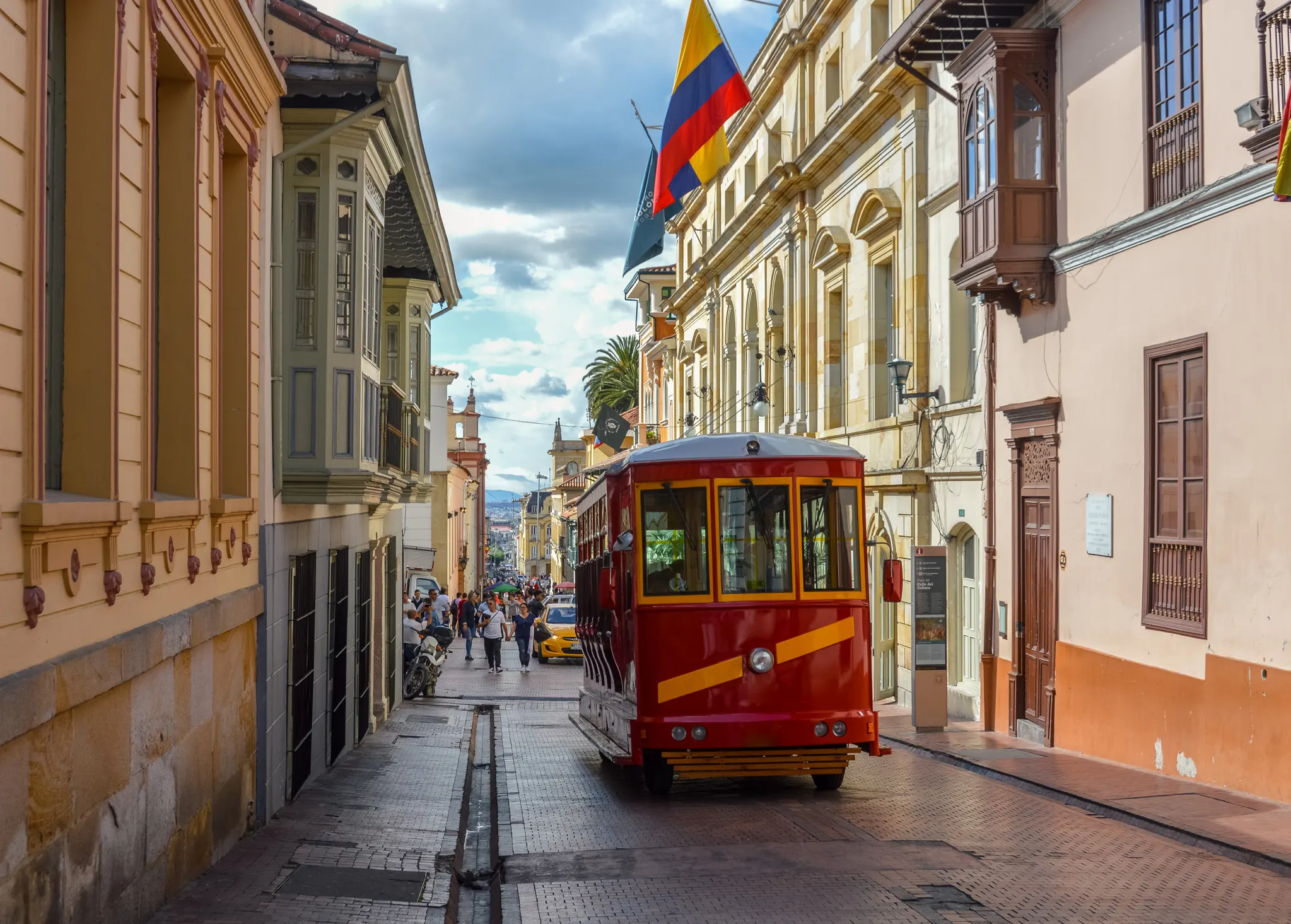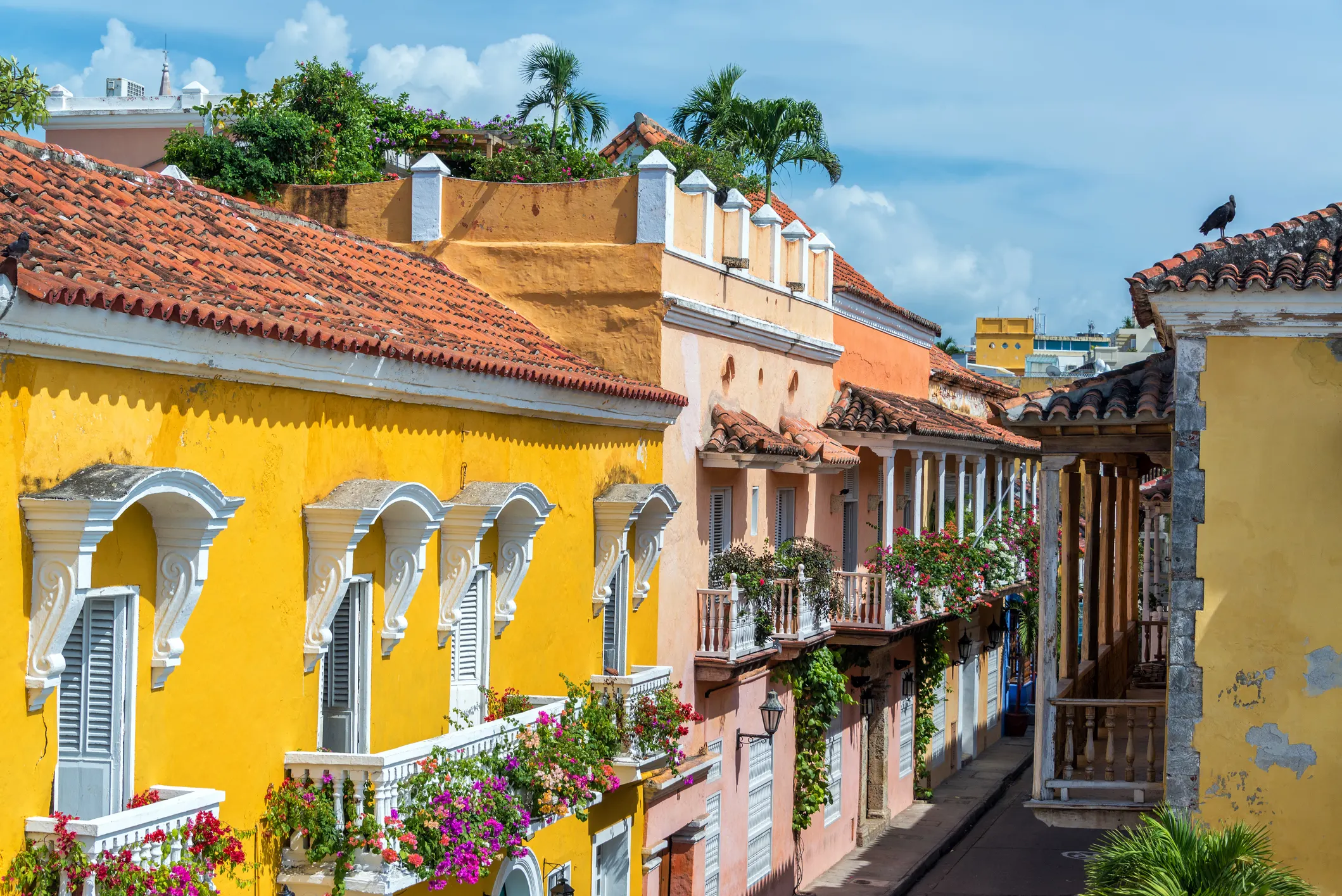In late 2022, Colombia launched its digital nomad visa program (Visa V Nómadas Digitales), allowing remote workers to live and work in the country for up to two years.
Michelle Thompson, a freelance writer and researcher, was among the early applicants. She successfully obtained her visa for a one-year stay. "I applied on the very first day and, after some back-and-forth, was approved," she recounts.
Before we get into the technicalities of the application process and visa requirements, let’s explore why this visa type is a good option for folks who aren’t quite ready for retirement or long-term residency.
“As a semi-retired freelance professional, I still have professional ties to Canada and often spend time there. In 2022, I was lucky to have some flexibility with where I was working, and I had visited Colombia several times over the years. I knew it was where I wanted to be but wasn’t quite ready to retire or invest in a property there,” Michelle explains.
Colombia's digital nomad visa presents an enticing opportunity for digital nomads and adventurers seeking more than a brief stay. With the chance to immerse in Colombian culture beyond the typical 90-day limit, this program is a gateway to extended exploration and professional flexibility, inviting you to blend work with wanderlust in one of Latin America's most vibrant landscapes.
YOUR CHANCE TO RETIRE OVERSEAS NOW
YOUR CHANCE TO RETIRE OVERSEAS NOW
Sign up for our free daily IL Postcards e-letter and we'll immediately send you a free report on the WORLD'S #1 RETIREMENT HAVEN—plus 9 more of the most desirable and very affordable destinations where you can upgrade your retirement right now. Each day you'll learn about the best places to retire, travel, buy real estate and enjoy life overseas.
By submitting your email address, you will receive a free subscription to IL Postcards, The Untourist Daily and special offers from International Living and our affiliates. You can unsubscribe at any time, and we encourage you to read more about our Privacy Policy.
Application Process
Applying for a digital nomad visa in Colombia is a straightforward process. The country has an online portal, which, although it can be a bit buggy at times, makes the visa application process reasonably easy. Applicants can select digital nomad as the type of visa they want and will be asked to pay an application fee of about $75 USD.
Once the form is completed, you can track the status of your application on Sistema Integral de Trámites al Ciudadano (SITAC), using the registration number in the confirmation email. You might receive a second email asking for additional documents before a final decision is made.
All communication is done via email, though anyone can call a service line for an update. Being fluent in Spanish really helps with this part of the process. If the application is approved, the person will be asked to pay a visa processing fee before receiving a copy of their document. New digital nomads will get a copy of their visa as an email attachment and will be asked to register the document within 14 days of arriving in Colombia.
“I was in Canada when my visa was approved, so the 14-day count didn’t start until I arrived and returned to Colombia. If you apply while you’re already in the country, you have 14 days from the day you receive the email to register.”
To register, visa holders must schedule an appointment using the Ministry of External Relations scheduling tool. When digital nomads arrive for their appointment, they’re asked to take a photo of the Colombian ID card, and the agent will take them through a series of questions to check the information on the visa and confirm details for the ID card. The card processing fee is about $40 and will expire the day after the visa’s end date. Your Colombian ID will arrive in the mail, or you can arrange to pick it up at the immigration office.
Requirements

Colombia’s Ministry of Foreign Relations signed Resolution 5477 in 2022, allowing remote workers, digital nomads, and digital entrepreneurs who don’t require short-stay visas to stay in the country for up to two years. Applicants must include the following documents in their application: the application fee, a copy of a valid health insurance certificate, a copy of the front page of the foreign passport, a Colombian address, and three months' worth of bank statements.
A letter or several letters that prove they work remotely and make enough money to cover their living expenses is also needed. The minimum monthly revenue allowed is three times the national wage average. At the time of writing, this was $800 to $900 US dollars per month. It’s possible to move and live in different cities during the digital nomad visa stay. “I started my journey in Bogota but ended up renting a place in Cartagena after visiting. I stayed there for almost an entire year, traveling to Bogota and to my other places whenever it made sense.”
Digital nomads still need to pay taxes in their home country since they aren’t considered residents under Colombian law. However, under normal circumstances, when you decide to stay for longer than 183 days, you need to do your taxes. The government has been ironing out these details, and this will also depend on whether the home country has a tax treaty in place or not. Digital nomadism is still a relatively new concept, and many countries are playing catch up when it comes to setting rules about taxation, residency, and other benefits they offer their citizens and permanent residents.
Digital Nomad Visa Benefits
The biggest benefit of having a digital nomad visa is that it offers a lot of flexibility to anyone who’s unsure about living in Colombia long-term and wants to explore what the country has to offer. The visa and ID can be used to secure an apartment, although this is at the owner's discretion. Typically, agreements will cover a 12-month period, though in some cases, digital nomads are able to negotiate a six-month lease. There is no guarantee that owners will agree to rent to someone without a guarantor, but in some cases, providing a generous deposit can help finalize the deal.
Michelle adds that “you will get the experience of living in Colombia like a resident with the freedom of leaving any time you need to, making it ideal for someone who wants to maintain ties with their country or employer back home, or is exploring the possibility of settling or retire permanently.”
The visa is also a great option for travel lovers who want to explore Central or South America for a few months and plan to make Colombia their base. It’s a very affordable option and international flights are accessible and affordable, not to mention the festivals, pristine beaches, and Andes mountains.
A digital nomad herself in 2023, Michelle admits that the visa helped her settle into a more stable life and integrate a little better with local residents. “One of the reasons I chose this option is because it allowed me to get my Colombian ID card, open a bank account, and sign a long-term apartment rental agreement,” she adds. Michelle was able to build a social network and plans to eventually return to the country as a full-time retiree. For any foreigner planning to live in Colombia, these are critical pieces of the settlement puzzle.
How to Use the Visa

The digital nomad visa is a V-type visa that permits holders to stay in Colombia for more than 90 days. Before applying, make sure that your passport isn’t set to expire during the time you’d like to receive the visa. Many foreigners have been approved for one-year and two-year periods, depending on the information they submitted. The visa allows them to enter the country several times, and some use the opportunity to travel from city to city. The ID card allows its holder to open a Colombian bank account, which can be helpful for registering a cell phone and paying rent and services.
It's also a good hybrid option for semi-retired folks or people who want to explore Colombia but haven't committed to living there yet. It could also be interesting for travelers who like to make multiple entries in the country and are not quite ready to give up their residency status in their home country.
That said, remember that in your home country, the length of time you spend outside of the country can affect your residency status, so make sure to do your research when it comes to paying taxes or receiving other benefits. For example, in Canada, being away for more than 10 months can mean you’ll no longer have access to your universal health care benefits and will need to re-activate them when you return home.
“I recommend keeping a copy of your visa on you at all times in case you need to explain to border security or airline staff why you’re not planning an immediate return to your home country,” says Michelle. Under the digital nomad program, foreigners are not allowed to work in Colombia or take on Colombian freelance clients. When entering Colombia for future visits, it will be important to show the digital nomad visa.
“My experience with the digital nomad visa was very positive,” says Michelle. “I was able to save money on short term rentals by securing a long-term apartment in Cartagena for an affordable price. Staying for longer periods at a time also helped me develop friendships, improve my Spanish, and see more of what Colombia has to offer.”
YOUR CHANCE TO RETIRE OVERSEAS NOW
YOUR CHANCE TO RETIRE OVERSEAS NOW
Sign up for our free daily IL Postcards e-letter and we'll immediately send you a free report on the WORLD'S #1 RETIREMENT HAVEN—plus 9 more of the most desirable and very affordable destinations where you can upgrade your retirement right now. Each day you'll learn about the best places to retire, travel, buy real estate and enjoy life overseas.
By submitting your email address, you will receive a free subscription to IL Postcards, The Untourist Daily and special offers from International Living and our affiliates. You can unsubscribe at any time, and we encourage you to read more about our Privacy Policy.
